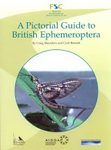Distribution Atlas
By: Mary Kelly-Quinn(Author), John J Bracken(Author)
223 pages, b/w line drawings, 1 colour map, b/w distribution maps, tables
![The Distribution of the Ephemeroptera in Ireland The Distribution of the Ephemeroptera in Ireland]()
Click to have a closer look
About this book
Customer reviews
Related titles
About this book
An intensive field sampling on the Ephemeroptera commenced in the Zoology Department, University College Dublin in 1995. This programme ran for two years and supplemented the existing records. The results provided a modern voucher collection of the Irish species. Circa 400 river and lake sites were sampled from the major catchments in the country covering a wide range of habitat types. All available relevant published records and many unpublished reports and theses containing ephemeropteran data were sourced to augment the existing data. Earlier workers recorded 36 ephemeropteran species (mayflies). This current study proposes a reduction to 33 species for inclusion on the Irish list. A total of 31 species have been verified by the authors from field collections taken during the 1995/98 period. Sampling covered the full range of potential habitats. Examination of the distribution maps will clearly show that 18 species are common and abundant throughout Ireland today and include: Baetis scambus, Baetis rhodani, Baetis muticus, Centroptilum luteolum, Cloeon dipterum, Cloeon simile, Rithrogena semicolorata, Heptagenia sulphurea, Heptagenia fuscogrisea, Ecdyonurus venosus, Ecdyonurus dispar, Ecdyonurus insignis, Leptophlebia vespertina, Ephemera danica, Ephemerella ignita, Caenis luctuosa, Caenis horaria and Caenis rivulorum.
A further eight mayfly species have been shown to exhibit patchy distributions in Ireland but are generally abundant in localised areas. These include Ameletus inopinatus, Siphlonurus lacustris, Baetis vernus, Baetis atrebatinus, Electrogena lateralis, Siphlonurus alternatus, Procloeon bifidum and Paraleptophlebia cincta.
An additional seven species: Siphlonurus armatus, Baetis fuscatus, Rhithrogena germanica, Ecdyonurus torrentis, Leptophlebia marginata, Ephemerella notata and Caenis macrura are rarely encountered. The paper deals predominantly with species identification, their distribution and habitat preferences. Where possible other relevant ecological observations and comparisons with the ephemeropteran fauna from Britain and mainland Europe have also been included.
Customer Reviews
Distribution Atlas
By: Mary Kelly-Quinn(Author), John J Bracken(Author)
223 pages, b/w line drawings, 1 colour map, b/w distribution maps, tables
























![De Haften van de Benelux (Ephemeroptera) [The Ephemeropteraof the Benelux]](http://mediacdn.nhbs.com/jackets/jackets_resizer_medium/26/266303.jpg?height=150&width=102)


